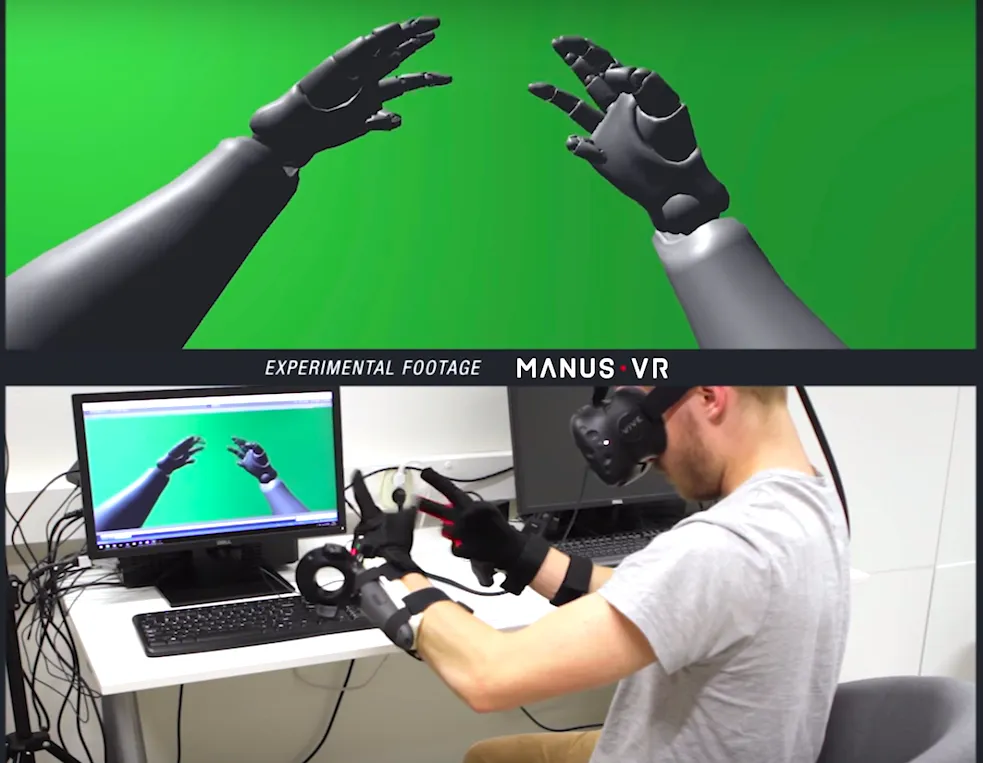Now that consumer VR is arriving (albeit slowly) in the form of the Oculus Rift and HTC Vive, the question is no longer “can virtual reality work” but “how far can we push the technology?”
Dutch startup, ManusVR, is attempting to answer that question by bringing more and more of your body besides just your head into the virtual world.
Manus has been a known quantity in the VR world for quite some time now. Its glove-base hand control system is one of several options being created that allow you to interact with digital objects through natural hand gestures and inputs.
https://www.youtube.com/watch?v=_D4HwR0Cd04
Manus has been working to refine its product and focuses mainly on the HTC Vive. They have added positional tracking by attaching Vive controllers directly to your forearms, and their proprietary finger tracking tech uses sensors and rotors to detect motion in your hands.
Today, Manus is further evolving its platform by increasing the scope of its hand tracking to include a user’s forearms as well.
https://www.youtube.com/watch?v=GkdtD50I9ZM
According to an official statement from Manus accompanying this video, “By strapping the Vive controllers to the arm, and using the position of the headset, Manus VR is able to generate a highly accurate model of the arms, in addition to hands and fingers.”
Manus’ Bob Vlemmix reached out via email to provide further details on exactly how the arm tracking update works:
“We use all the “hard-point” information from the full system to calculate with inverse kinematics what the position of the arm is. For proper positional tracking we already needed a fixed point on the forearm. In this case we used the VIVE controllers but we could do this with any kind of tracking system. When we receive third party support from other HMD systems we will include arm tracking to those systems as well.”
The result of all this is that, “[The system] displays the arms and elbow joint at exactly the position of the actual arms, with very little digital guesswork or latency.”
At this point in VR development, most studios are opting for a “floating hands” method of hand/arm visualization. The majority of games and experiences eschew your arms all together, feeling that using CG forearms and shoulders would do more to hinder immersion rather than increase it.
Manus’ solution is aiming to remove any need for digitally shoehorned arms by visualizing and tracking your actual limbs in real time. This system is still in its early days, but it does represent an interesting instance of encroachment where VR tracking technology begins to eek its way past the head and hands towards the future goal of total-body presence.
“At this moment we have enough on our ‘hands,'” Vlemmix writes. “But will push as much as we can out of our existing hardware. When it makes sense to create more VR hardware add-ons we will definitely try to make them.”
The arm tracking feature will be released as part of the Manus SDK in June. It will be up to participating developers to determine just how far this capability can be pushed, and what sort of mechanics can be built around it.





























